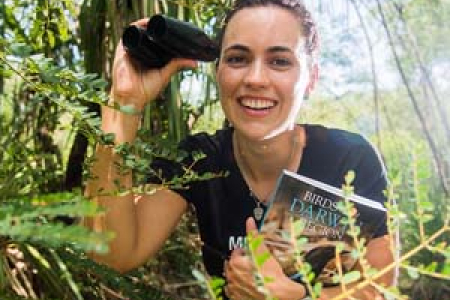Darwin winter ripe for pigeons
A project looking at the migration behaviour of a well-known bird species found in and around Darwin has discovered they call the city home for longer than previously thought.
Charles Darwin University Research Institute for the Environment and Livelihoods PhD candidate Amanda Lilleyman and Honorary Senior Research Fellow Dr Richard Noske recently published an article on the Torres Strait Pigeon.
“The Torresian Imperial-Pigeon (Ducula spilorrhoa) more commonly known as the Torres Strait Pigeon was once considered to be completely migratory, departing for New Guinea in February and returning to Northern Australia to breed in August,” Amanda said.
“However, reporting rates from Darwin suggest that since at least the early 1990s a substantial proportion of birds ‘over-winter’ in the region.”
To find out more Amanda worked with volunteers to monitor a roost-site in the evening, once a month for four years, counting birds in five-minute intervals as they arrived at the site.
“In general more birds were found at the site during the wet season, but we also counted large numbers of birds at the site during the dry season,” she said. “We actually counted the largest number of birds (1325 birds) in June 2011, following the wettest wet season on record.”
She said the observations confirmed that many Torresian Imperial-Pigeons did not migrate to New Guinea after the breeding season.
“We don’t yet know if any individual birds are long-term residents, but it is possible that residency in the early dry season has evolved because of year-round availability of food resources in the urban environment,” she said.
The paper is titled “Partial loss of migratory behaviour by Torresian Imperial- Pigeons Ducula spilorrhoa in Darwin, Northern Territory” and was published in Australian Field Ornithology 2016.
